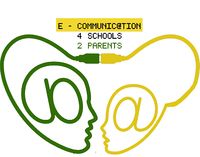ECom4s2p
|
Communication between schools and families is essential for building trusting relationships that foster parental involvement. Parental involvement in schools and social institutes is necessary for youngsters to develop successfully and to make decisions that will have positive outcomes for their futures.
This study will examine the role of new ICT communications technologies in fostering parental involvement in schools and social institutes and uncovers barriers that prevent usage of technology to promote communication. Little research has been done to evaluate the role of emerging technologies in enhancing communication practices between schools specialised in vocational training and parents/guardians.
The purpose of this study is to evaluate the role and possibilities of different interpersonal communications technologies like cell phone and e-mail, school websites, blog, electronic learning environments and new social websites like Facebook, Twitter, etc. in communicating with parents. Additionally, these communication modes will be appraised for their efficacy in facilitating parental involvement in schools.
